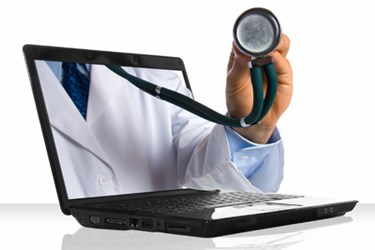The Road To Mainstream Consumer Adoption Of Telehealth

By Arif Razvi, co-founder and president, Alvin Healthcare
Making healthcare more affordable and accessible is an important mission for our nation, and for all of those who are personally invested in helping change lives. To get there, we must help educate others about, and evolve different attitudes toward, healthcare.
Important steps toward transforming healthcare involve 1) making telehealth more widely available to those who can truly benefit from it, 2) educating them on its value, and 3) making it affordable.
Think about this: It took 46 years before one-quarter of the American population adopted electricity, but it took only 13 years for that same number to adopt mobile phones, seven years to access the web, and less than three years to embrace the iPhone. Adoption of technology often makes our lives easier and better. Now, it’s healthcare’s turn.
Pick Up The Phone
Apply that same adoption curve to telemedicine as a mainstream service, such as urgent care and emergency rooms, and you can see that it won’t be long before consumer-focused care via telemedicine on a mobile device will be widely accepted and utilized as the current trend of in-person visits for minor acute illnesses.
While telemedicine won’t be (and shouldn’t be) as popular as other apps on an individual’s mobile phone, tablet or computer, people will use it at an increasing rate to reduce the burden on an already strained healthcare system. That said, consumers will need to make a focused effort to bring telemedicine to the “mainstream” so that they can truly benefit from this opportunity.
Meet Alvin
My co-founder, Joey Truscelli and I founded Alvin Healthcare with this mission in mind: Build a consumer-centric brand that focuses on quality, affordability and access to change lives. We offer consumers access to care for minor illnesses, nationwide, 24/7, at their convenience via any mobile device or computer.
To achieve this, Hello Alvin partners with telehealth providers to make direct-to-consumer telehealth a reality for everyone. Giving consumers, especially those with limited or no insurance coverage, access to a benefit previously unavailable to them.
Growth and cost savings through telehealth is happening. Now let’s put those same conveniences and cost savings in the hands of those who really need it the most.
Doing so can lead to a rapid expansion of consumer adoption, utilization, reductions of in-person visits to overburdened ERs, and hundreds of millions of dollars saved by consumers annually.
Telemedicine is a high-quality, low-cost entry point for many consumers to get comfortable in changing their behaviors, and use technology as a substitute for an in-person visit for many minor, routine illnesses, such as coughs, colds, flu, upper respiratory infections and so on.
The Field Is Growing Fast
According to 2016 data from Rock Health, 2011 saw just over $1 billion invested in digital healthcare. By 2016, investment levels grew to $4.2 billion and are expected to top $6 billion in 2017. Of the $4.2 billion invested last year, $287 million was invested in telemedicine — a clear sign of growth, opportunity and adoption of the technology across a wide-range of use cases.
While telehealth doesn’t solve all our healthcare problems, advances in mobile phone and tablet technology — coupled with growth in digital healthcare services and connected devices — are converging to help make the patient experience more meaningful when it comes to managing chronic conditions, diagnosing and treating minor illnesses, simplifying the healthcare process and providing access to care to millions of Americans.
